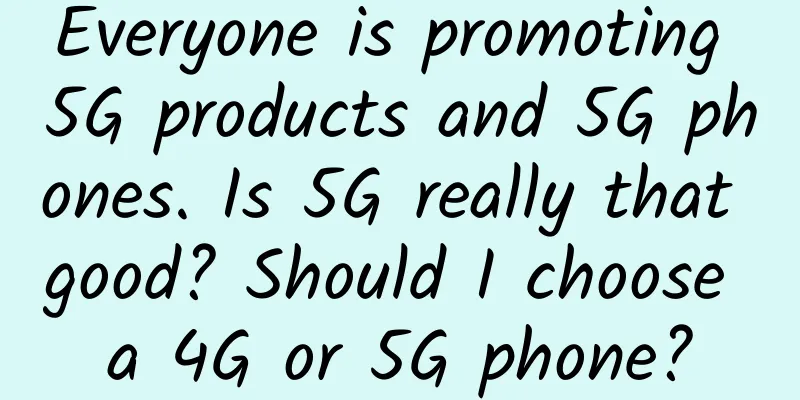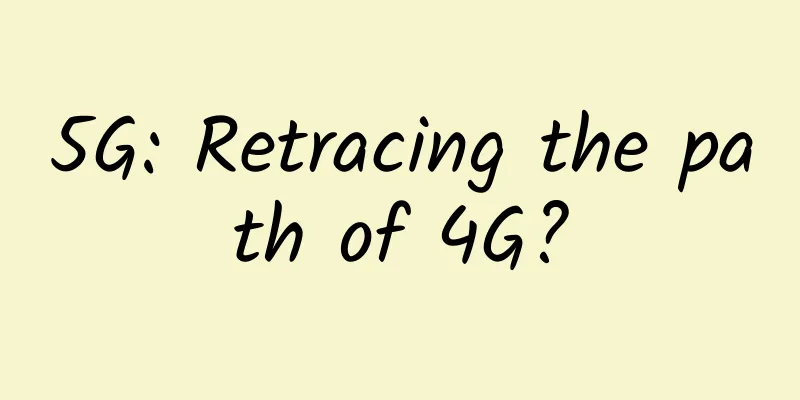Understanding UWB Ultra-Wideband Technology in One Article

|
"Point and hit" is often used to describe a person's good skills on the court. In fact, the original meaning of this word is "obey someone's orders". In the era of popularization of smart devices and the Internet of Everything, people want to give their mobile terminals such precise control capabilities, which requires the help of a technology - UWB ultra-wideband. Currently, there are not many consumer electronics brands that have used UWB ultra-wideband technology on a large scale. The most familiar brand is Apple. iPhones equipped with Apple's U1 ultra-wideband chip can quickly share files with each other. When the phone is close to the HomePod mini smart speaker with a built-in ultra-wideband chip, it can play music and get personalized listening suggestions. After binding with the AirTag with a built-in ultra-wideband chip, the iPhone has the ability to accurately locate and track objects indoors. So what exactly is UWB ultra-wideband technology, what are the application scenarios of UWB technology, and how big is the market for UWB technology? Let’s talk to you in detail today. 1. What is UWB technology?UWB (Ultra Wide Band) technology is a wireless carrier communication technology that uses a frequency bandwidth of more than 1 GHz. It does not use the sinusoidal carrier in the traditional communication system, but uses nanosecond-level non-sinusoidal narrow pulses to transmit data. Therefore, it occupies a large spectrum range. Although it uses wireless communication, its data transmission rate can reach more than several hundred megabits per second. UWB technology has the advantages of low system complexity, low power spectrum density of transmitted signals, insensitivity to channel fading, low interception capability, high positioning accuracy, and strong penetration capability. It is especially suitable for high-speed wireless access in dense multipath places such as indoors. UWB is not a new technology. It was first used in military radar and communication applications under the name "pulse radio". Since 2002, the Federal Communications Commission (FCC) of the United States has authorized its unlicensed use and allocated the 3.1~10.6GHz frequency band for it, occupying a bandwidth of more than 500MHz. Compared with the three well-known technologies of GNSS, Wi-Fi and low-power Bluetooth that can provide positioning services, the advantages of UWB technology are as follows: First, the traditional Global Navigation Satellite System (GNSS) can provide satellite positioning services, but because the satellite signals will be blocked by buildings, it cannot achieve indoor positioning. Wi-Fi and Bluetooth usually determine location through the received signal strength indicator (RSSI), which only shows a rough category of "weak" or "strong" received signal, and the highest positioning accuracy can reach the meter level. There are three UWB positioning technologies, namely TOF (Time of flight), TDOA (Time Difference of Arrival) and PDOA (Phase Difference Of Arrival). Although this is only applicable to shorter ranges, the location of the signal source can be determined with an accuracy of less than 50 cm (under optimal conditions and deployment) and extremely low latency. Through this picture, you can more intuitively understand the differences between UWB technology and Wi-Fi and Bluetooth technology. In short, the advantages of UWB technology are:
Of course, UWB, Wi-Fi and Bluetooth technologies do not exist in isolation. They can be used simultaneously with complementary advantages. They can provide terminal products such as smartphones with positioning and data transmission services that meet various needs, and have high requirements for related antenna and RF design. 2. Is there a standards organization for UWB technology?Each wireless transmission technology usually has a standards organization responsible for the formulation of relevant standards and technical certification, such as the Bluetooth Technology Alliance, the Wi-Fi Alliance, the International Telecommunication Union, etc. In the field of UWB technology, there are currently two major organizations, the FIRA Alliance and the UWBA Ultra-Wideband Alliance, both established in 2019. The FiRa Consortium is committed to developing and widely adopting interoperable ultra-wideband (UWB) technology to enable secure, fine-ranging and positioning capabilities that provide a seamless user experience. Members of the FiRa Alliance mainly develop products based on UWB secure fine ranging technology based on the IEEE 802.15.4 standard, and develop application scenarios of UWB technology across various vertical business fields. The FiRa Alliance works closely with other industry organizations, such as IEEE, Wi-Fi Alliance, Car Connectivity Consortium (CCC), etc., focusing on UWB use cases operating in the available 6-9 GHz frequency band. The members of the FiRa Alliance are divided into sponsor members, contributor members, associate members, adopter members, test laboratory members, academic and educational members, many of which are familiar brands. The UWB Alliance is focused on providing a favorable regulatory and spectrum management environment under the 802.15.4z standard to maximize the growth of the UWB market. The UWB Alliance aims to promote various vertical industries to demonstrate the value of UWB for the Internet of Things and Industry 4.0, and build a global ecosystem across the entire UWB value chain from chips to services. In addition, the Ultra-Wideband Alliance is currently advocating for new spectrum to extend UWB to 12.4 GHz and emerging higher frequency bands in Europe. The current members of the Ultra-Wideband Alliance include the above brands, as well as many well-known semiconductor manufacturers. 3. What are the application scenarios of UWB technology?Thanks to Apple's vigorous promotion, UWB technology has gradually become well-known in the field of consumer electronics in recent years, but its application in industrial and commercial fields has been very mature. It is an important component of the RTLS (Real Time Location Systems) real-time positioning system, which mainly utilizes the characteristics of UWB ultra-wideband technology, such as high positioning accuracy, fast short-distance communication transmission speed, and rapid response. What I want to share with you today is mainly the current application scenarios of UWB technology in consumer electronics products.
Since the iPhone 11 series of mobile phones, Apple has successively applied its own UWB solution in products such as Apple Watch S6, HomePod mini smart speakers, iPhone 12 series mobile phones and Aritag wireless trackers. The control chip is Apple U1. Samsung mainly introduced the UWB solution on mobile phones, including Galaxy Note 20 Ultra, Galaxy Z Fold 2, S21+ and S21 Ultra. At the same time, Samsung also launched the SmartTag+ smart tracker using UWB technology. Xiaomi, a domestic mobile phone brand, has launched a UWB connection technology called "One-finger Connection", which fully leverages the advantages of its smart home ecosystem and will be able to link with various smart home products in the future. In addition, OPPO has also demonstrated the precise orientation and precise control capabilities between mobile phones and IoT devices at the Technology Conference. Apple initially launched the U1 chip on the iPhone 11 series models, using the high-speed transmission capabilities of UWB technology to improve the transmission speed of the "AirDrop" function. At the same time, using its precise positioning capabilities, "AirDrop" will prioritize establishing a connection with the pointed iPhone.
When you use an iPhone equipped with the U1 ultra-wideband chip and bring it close to the HomePod mini smart speaker also equipped with U1, the audio currently being played on the speaker will smoothly transfer to the iPhone for continued listening; when no music is playing, hold the iPhone close to the HomePod mini, and personalized music playback recommendations will pop up on the screen without unlocking the phone. The AirTag wireless tracker is a combination of Bluetooth low energy and UWB ultra-wideband technologies. With ultra-wideband technology, users can see on their mobile phones how far away the AirTag is and which direction to look for it, making it easier to track assets. Xiaomi's "One-finger connection" UWB technology function demonstration. When the phone is pointed at a UWB-enabled electric fan, a control card will pop up on the phone to control the fan without a physical remote control or downloading a separate APP. In addition, Xiaomi's "One-finger connection" also enables operations such as smart TV screen projection and smart door locks that open when approached. This picture from the FiRa Alliance official website shows in more detail the impact that UWB technology will have on our lives in the future, including: digital car keys, identity recognition, indoor navigation, offline shopping behavior analysis, exhibition data analysis, wireless payment, VR games, gesture recognition, etc. As mentioned earlier, the RTLS real-time positioning system based on UWB ultra-wideband technology is now very mature in the industrial sector. It is mainly used in industrial manufacturing (tracking personnel, vehicles and equipment, etc.), location tracking (locating personnel/equipment/documents in special buildings such as prisons and other special places), warehousing and logistics (libraries, e-commerce industries, etc.), wireless measurement, intelligent driving (automatic entry and exit of vehicles), as well as augmented reality, competitive sports and other fields, and is widely used. 4. How big is the UWB market?UWB ultra-wideband technology has been developed in the industrial sector for many years. According to data, UWB technology will occupy 30% to 40% of the indoor positioning market in the future, and its market size is expected to reach US$16.4 billion by 2022. The market prospects are very broad. But what we are mainly discussing here is how big the future market of UWB technology will be on the consumer side. At present, if UWB ultra-wideband technology wants to achieve the above functions, the main product it needs to rely on is the smartphone. For example, Apple and Samsung's mobile phones that already support UWB technology have already driven the sales of UWB chips in the tens of millions. In the domestic market, Xiaomi, which has already launched the "one-finger connection" technology, sold nearly 10 million high-end mobile phones in 2020. The AIoT ecosystem has gradually improved, and the Mi Home APP has 45 million monthly active users. Its iterative products have the possibility of upgrading to UWB technology; in the future, leading mobile phone manufacturers such as OPPO and vivo will also join in. It can be said that the huge shipment volume of mid-to-high-end mobile phones can continue to lead the development of the C-end UWB market, and then drive the shipment growth of various UWB devices such as smart watches, smart wearables, and smart homes. ABI Research predicts that shipments of UWB-enabled smartphones will increase from more than 42 million in 2019 to nearly 514 million in 2025.
Not only that, UWB technology manufacturers focusing on industrial-grade solutions have also entered the market after seeing the huge development potential of the consumer market. The most representative one is Qingyan Xunke, which is the only Chinese solution provider with voting rights in the FIRa Alliance. It has currently launched TicTag, an AirTag-like hardware product compatible with the Android ecosystem, and will open its hardware platform to OEMs, providing platform-level products compatible with 802.15.4z and FIRa, which can help more consumer brands quickly enter this market. The Ultra-Wideband Alliance believes that since 2019, ultra-wideband has been expanding into a mainstream consumer technology for smartphones, wearables, automotive and industry, and is expected to drive sales of more than 1 billion devices per year by 2025. SummarizeUWB is not a new technology. Its functions are mainly positioning and communication. There are many reasons why it has not become a universal standard like Bluetooth and WiFi. In recent years, driven by Apple, UWB technology has been known by the C-end market and more consumers, because in the era of the Internet of Everything, it is indeed an effective technology for interconnection between indoor devices, simplifying the pairing process, and there is still a lot of room for development and market opportunities in the future. At the same time, we also see that in order for mobile devices to have better spatial perception capabilities, the support of an entire application ecosystem is needed. Apple has already begun to build it, and brands such as Samsung, Xiaomi, and OPPO are gradually following suit. By then, whether devices from different manufacturers can achieve interoperability and compatibility may be a new issue. It is foreseeable that more companies and products will adopt UWB technology in the future, not just small items such as smartphones, wearable devices, and smart homes, but also various location-based UWB infrastructures will be needed in indoor spaces. It is understood that by 2022-2024, with the completion of the development of the IEEE 802.15 4z standard, UWB sensors and actuators will be able to be combined into a wireless network and more actively applied to mass markets and enterprise solutions, adding a new dimension to indoor positioning and short-range communications. |
>>: South Korea: 14 6G communication satellites will be launched before 2031
Recommend
I finally figured out the service flow limit issue.
Introduction With the development of microservice...
RoboVPS: Germany/Netherlands unlimited traffic VPS starting from 129 rubles (≈10.9 yuan) per month
RoboVPS is a foreign hosting company founded in 2...
These three essential home gigabit network upgrade strategies
At present, the home broadband access provided by...
Why does TCP require three handshakes instead of two?
Hello everyone, I am the island owner Xiaofeng. T...
A Visual Guide to Kubernetes Networking
The network inside Kubernetes is not much differe...
When is the right time to buy Wi-Fi 6E?
Despite the indisputable advantages of operating ...
V5.NET New Year 20% off, Hong Kong E5 dedicated server monthly payment starts from HK$440
V5.NET is a business that provides independent se...
South Korea's largest telecom operator's server failure caused widespread Internet outages
According to CCTV Finance, starting at 11:20 a.m....
The three major operators continue to advance 5G construction, with capital expenditure concentrated in the second half of the year
Data released by the three major operators recent...
DAGW: Exploration and Practice of Data Aggregation Gateway
Business Background Bilibili is a video community...
Three major challenges faced by enterprise infrastructure modernization
Currently, business development often leads to a ...
What does Wi-Fi bring to Matter’s push for home IoT?
As Matter’s foundational technology, Wi-Fi can he...
Industrial Internet + 5G, we must plan carefully before taking action
In the previous article, "IoT operating syst...
How will 6G change the workplace?
The next generation of connectivity is coming, pr...
Maybe it’s easier to understand the principles of OAuth this way!
That year, the number of users of my company reac...









